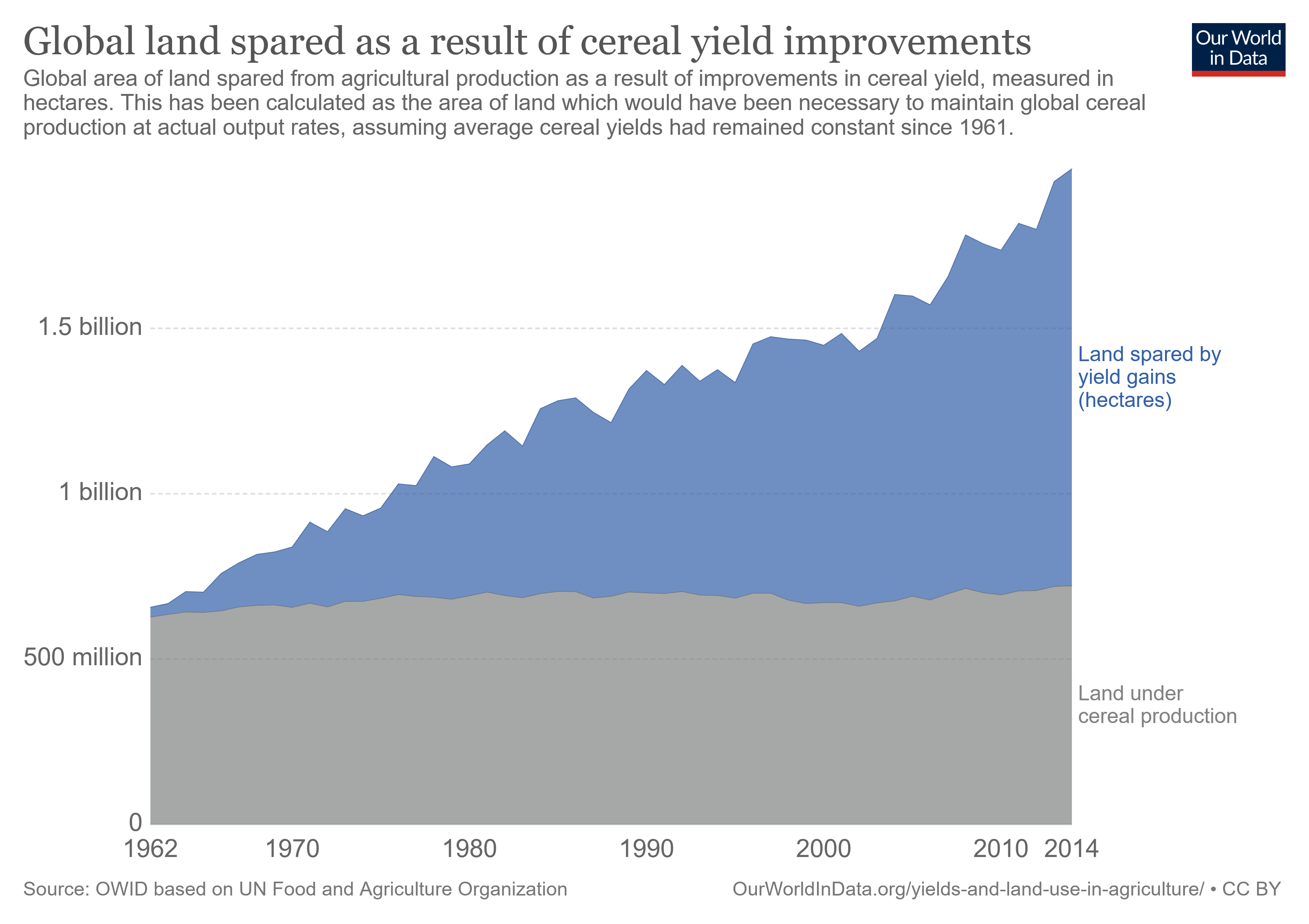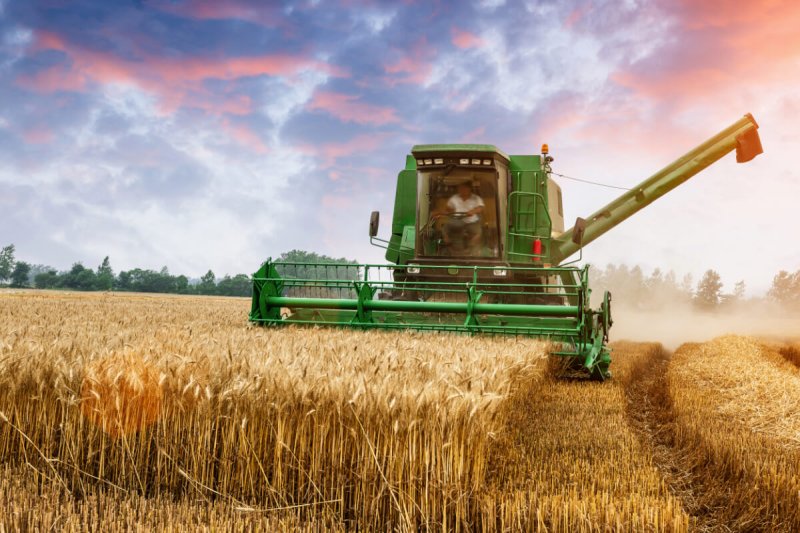If we took away significant gains in cereal crops yields since 1962, farmers would have been forced to claim more than twice as much land as they currently use for the cultivation of those crops, according to an analysis by the University of Oxford’s “Our World in Data.”
In 1962, there were 626 million hectares being used for cereal crops, compared with 721 million in 2014. To keep up with rising global demands, the farming footprint would have been forced to grow to nearly 2 billion hectares, meaning that 1.26 billion hectares were free for other uses.
According to the analysis: “Land under cereal production refers to harvested area, although some countries report only sown or cultivated area. Cereals include wheat, rice, maize, barley, oats, rye, millet, sorghum, buckwheat, and mixed grains. Production data on cereals relate to crops harvested for dry grain only. Cereal crops harvested for hay or harvested green for food, feed, or silage and those used for grazing are excluded.”
































